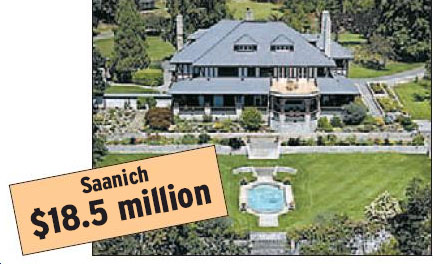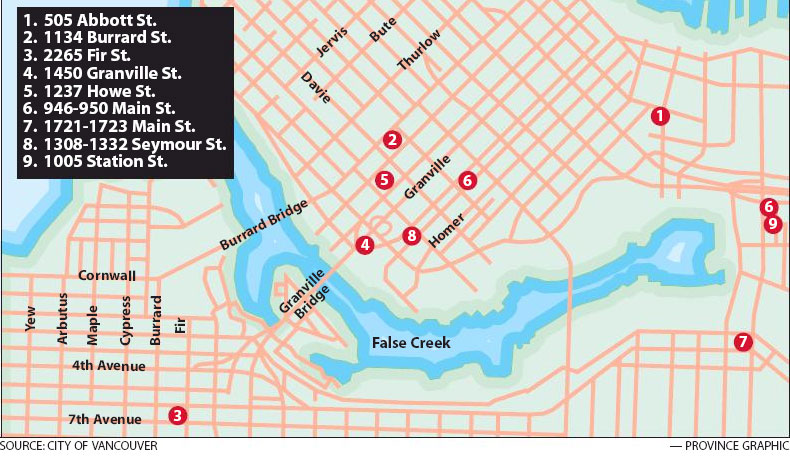An attempt to invoke a bygone era in a heritage building comes up short when it comes to the food and the service
Mia Stainsby
Sun

The Transcontinental has a lively bar area and an impressive setting, although the dining room lacks personality and the food isn’t strong enough to make up for it. Photograph by : Ward Perrin, Vancouver Sun
It’s a Vancouver gem, so thank you Eli Gershkovitch for the partial makeover of the part of the former CP station on Cordova Street that was frumpy, dishevelled, bricked and drywalled over, its inner beauty ransomed for a rabbit-warren of offices.
“It was like urban archeology extracting the cinder blocks,” Gershkovitch says.
The restoration respects the original neo-classical beaux-arts style and tall, graceful, arched windows once again pour in light; elegant mouldings have been replaced and the space evokes the era when Canadian Pacific trains ping-ponged across this vast country.
Too bad, however, that a mezzanine level was installed over part of the room, subtracting from the soaring ceiling. The floor-to-ceiling steel V-beam that stands out like a lightning bolt is from a previous seismic upgrade that was buried behind bricks.
Gershkovitch recently opened The TransContinental Heritage Restaurant and Railway Lounge in the space, conjuring an old CP hotel dining room with Group of Seven-ish paintings, railway posters and Orient Express style dishes. And while I’d love to say I’m enamoured of the new restaurant, I was underwhelmed.
The food also seems to also be from a bygone era and set against today’s culinary tableau, the straight-ahead dishes (including prime rib and five different steaks) aren’t stand-outs. While the lounge seems to be a great spot to socialize, have a drink, have a nosh, the dining room, though grand in scale, lacks personality and the food isn’t strong enough to make up for it.
The menu goes coast to coast, starting with B.C.’s wild salmon, moving to Alberta beef, bison, poutine, Nova Scotia lobster and Atlantic sea scallops. Dinner entrées are $23 to $30; vegetarian and pasta dishes are $17 and $18. (A bar and patio menu offers lighter fare, including a prime rib beef dip, prime rib burger and Boston blue crab, tomato and smoked cheddar dip.)
I found both the food and the service uneven. Baked crab cake had good structure and was fat and full of fresh crab; bison carpaccio with roasted garlic, olives, pecorino cheese was tasty; a house salad was crisply fresh (with iceberg lettuce), hazelnuts, dried blueberries and goat’s cheese; a grilled lamb trio (double rack shop, sausage, tenderloin) was competently cooked but not a standout. (The accompanying mint gnocchi was not a good idea.)
A grilled strip loin (a quality piece of beef) was cooked to medium which is a spoiler when medium-rare was requested. Chicken breast with morels featured a moist piece of chicken but I had to go foraging for those mushrooms and they were too small to add any flavour. Salmon was overcooked and sat joyless on the plate. One thing I loved was the mascarpone ice cream that accompanied a carrot cake dessert. It was more delicious than the main attraction.
While the bar area is lively, the dining room is in urgent need of selfhood. Instead of the background music that played when I visited, some higher decibels of Michael Bublé or jazz would add to the ambience. (I’ve been told by others that the music and sound system were good when they visited.)
On a second visit, we found that sitting under the mezzanine creates an acoustics problem; we had to yell to be heard above our noisy neighbours.
While some servers were spot on, others left a bad impression. On one visit, spilled food remained on the table for most of the meal; one started to walk away in the midst of answering a question. Cutlery isn’t changed between courses and for the dinner prices, they should be.
I wondered if a more casual spot with the feel of a busy railway station with an entrance from the bustling concourse wouldn’t have worked better . . . but alas, Gershkovitch would be competing with himself. Steamworks Brewing Company, his other restaurant on the same block, has that market down cold.
Postscript: In fact, at deadline, Gershkovitch called with the news that he’ll be expanding the trans-Canada menu and looking at a “more broader, more casual fare.”
TRANSCONTINENTAL HERITAGE RESTAURANT AND RAILWAY LOUNGE
Overall: 3
Food: 2 1/2
Ambience: 3 1/2
Service: 3
Price $$$
601 West Cordova St., 604-678-8000, www.thetranscontinental.com
Open for lunch and dinner Monday to Friday, and dinner on Saturday.
Restaurant visits are conducted anonymously and interviews are done by phone. Restaurants are rated out of five stars.
© The Vancouver Sun 2007












